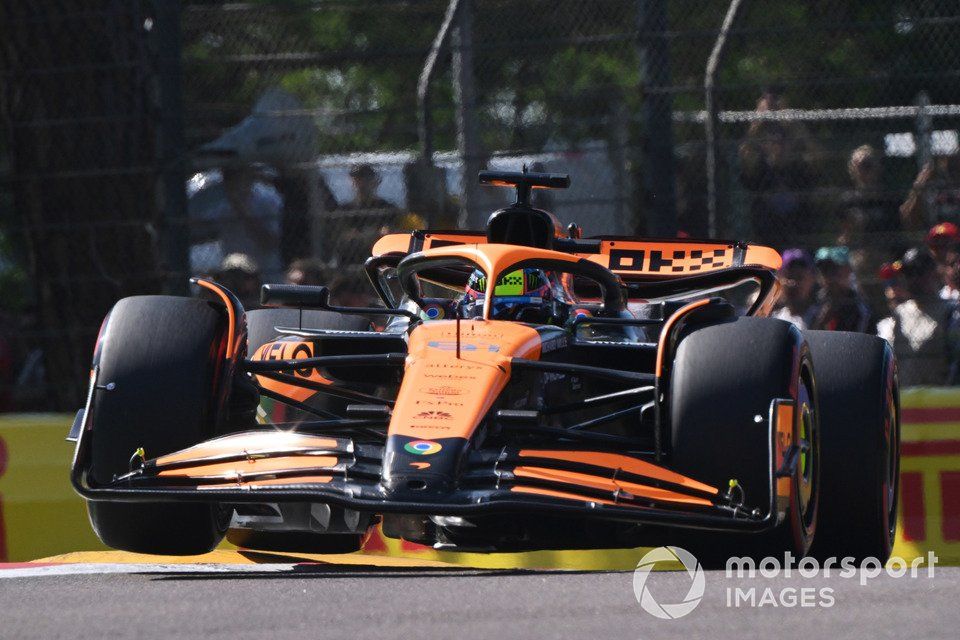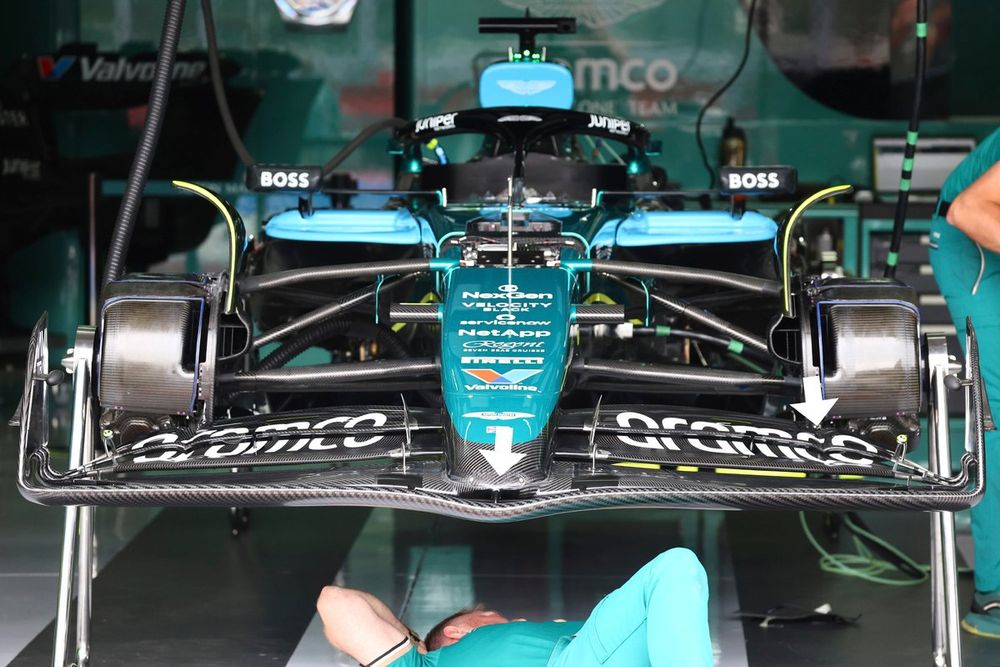Red Bull driver Verstappen narrowly edged McLaren’s Lando Norris after he gapped the Briton in the first stint on mediums, but struggled much more on the hard Pirelli rubber for the majority of Imola’s 63-lap race.
Verstappen explained that he couldn’t keep the hard compound in the right operating window, which led to a lack of grip that he says nearly saw him crash at Turn 7’s Tosa hairpin.
«On the mediums, it was very good,» Verstappen said after clinching his fifth grand prix win of the season.
«But then as soon as I swapped to the hard tyres, maybe not the first five to 10 laps but after that, I was like: ‘I’m not sure I can bring this to the end’.
«The tyres just fell out of the operating window and it was just like driving on ice, really snappy.
«At Turn 7, I almost ended up in the grandstands, for my feeling, at some point. It was just very difficult, really weird lines that I had to take.»
In previous events, Verstappen would have simply had the advantage to cruise to the finish anyway, but in the vastly upgraded McLaren MCL38, Norris managed to reel the triple world champion back in, hounding him to the line over the last 10 laps.
Verstappen admitted he had doubts about keeping Norris behind but focused on getting a good exit onto Imola’s main straight, which was the only possible overtaking opportunity for the Briton.

Max Verstappen, Red Bull Racing RB20
Photo by: Sam Bloxham / Motorsport Images
Norris never made it into DRS range of the Red Bull but closed to seven-tenths at the finish.
«I was really trying to survive at the time, and then suddenly Lando really picked up pace,» Verstappen explained.
«I could see him catch up and I was not sure if I could keep him behind. As soon as it was half a second lap, that’s a lot.
«But on the other hand, you can’t do anything about it. You cannot suddenly try and force a half a second out of it when you don’t have to balance.
«I was just trying to really not make mistakes, drive around the balance issues and be quick on the straight. With the rear wing we had, we were quite fast on the straight.»
An additional headache was a black-and-white flag for track limits, which meant Verstappen was under constant threat of being slapped with a five-second penalty.
«I was understeering a lot on the medium and that was pushing me off sometimes if I missed the apex,» he explained his three track limits offences.
«After that I was leaving a bit more margin. The last few laps when Lando was catching were a bit harder, because I had to use the track as much as I could.
«It does require a bit more focus, so every exit you have to be really sure what you’re doing.»


































